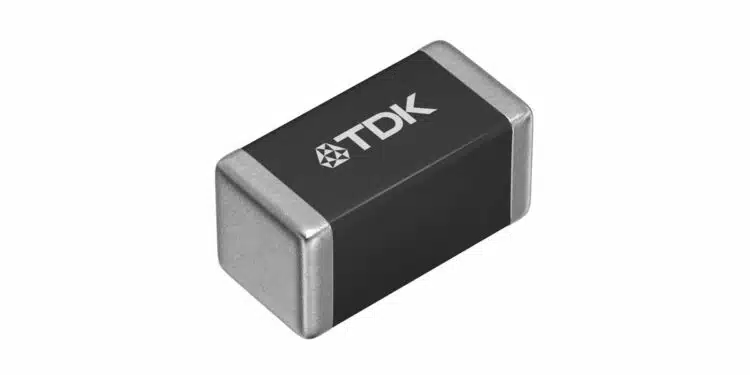TDK Corporation announces expansion of the MLJ1005-G series (1.0 x 0.5 x 0.5 mm; L x W x T) multilayer SMD inductors for automotive Power-over-Coax (PoC) circuits. Mass production of these new components began in November 2024.
Advanced driver assistance systems (ADAS) are designed to enhance vehicle safety by using automotive cameras and sensors that monitor the surrounding environment.
These systems rely on multiple cameras, typically installed at the front, rear, and sides of the vehicle, to capture real-time imagery for safe and secure driving. In standard configurations, automotive cameras require two separate lines for power and signal transmission: a power line connected to the vehicle’s battery and a signal line connected to the electronic control unit (ECU).
However, with PoC technology, a single coaxial cable can simultaneously carry both power and data, streamlining the wiring. This reduction in cables contributes to vehicle weight reduction, which can improve fuel efficiency and lower carbon emissions, promoting a cleaner environment.
The PoC system requires a filter incorporating multiple inductors to effectively separate power from the data signal before processing. TDK’s new MLJ1005-G series offers advanced features tailored to meet these demands. By using proprietary materials and structural design innovations, TDK has minimized impedance deterioration, ensuring reliable and high-quality signal filtration.
Additionally, the MLJ1005-G series is optimized to support high-frequency performance, responding to recent increases in PoC data transmission speeds. At just 1.0 x 0.5 mm, this series is the smallest multilayer inductor for PoC circuits while supporting up to 480 mA of current.
Looking ahead, TDK is committed to developing advanced inductors for automotive PoC applications to meet evolving market requirements. By refining multilayer, wire-winding, and thin-film technologies, TDK aims to optimize product design, expand its PoC inductor portfolio, and contribute to enhancing PoC signal quality across automotive applications.
Features
- Achieves high-quality filter characteristics by suppressing the deterioration of impedance while current flows
- Achieves high impedance at high frequencies
- Industry’s smallest size in multilayer inductors for PoC circuits, contributing to a reduction of the amount of space required in the installation area
Applications
- PoC circuits for automotive cameras































